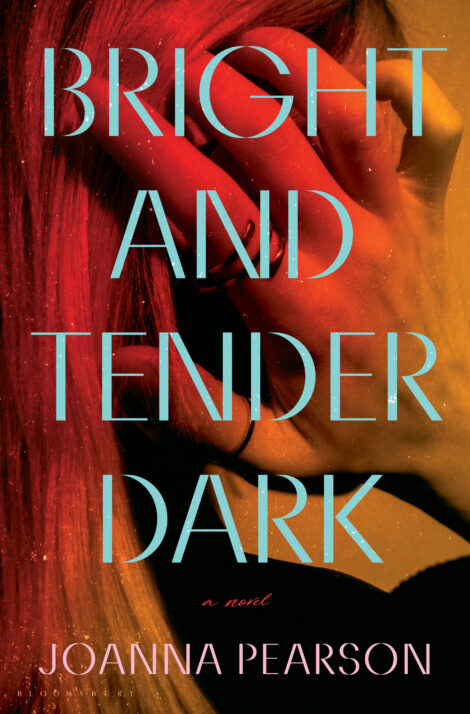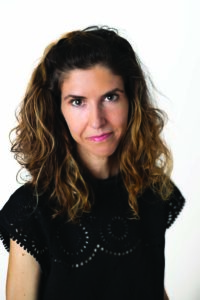
BRIGHT AND TENDER DARK
For readers of Notes on an Execution and I Have Some Questions for You, a wire-taut literary debut about a murder on a college campus and its aftermath twenty years later.
Days after the dawn of Y2K, beautiful, charismatic nineteen-year-old Karlie Richards is found brutally murdered in her campus apartment. Two decades later, those who knew Karlie—and those who just knew of her—remain consumed by her death. Among them is her freshman-year roommate, Joy, now middle-aged and mid-divorce, living in the same college town and desperate for a new beginning. When she stumbles upon a twenty-year-old letter from Karlie,
For readers of Notes on an Execution and I Have Some Questions for You, a wire-taut literary debut about a murder on a college campus and its aftermath twenty years later.
Days after the dawn of Y2K, beautiful, charismatic nineteen-year-old Karlie Richards is found brutally murdered in her campus apartment. Two decades later, those who knew Karlie—and those who just knew of her—remain consumed by her death. Among them is her freshman-year roommate, Joy, now middle-aged and mid-divorce, living in the same college town and desperate for a new beginning. When she stumbles upon a twenty-year-old letter from Karlie, Joy becomes convinced the man in prison for her murder was wrongfully convicted. Soon she is diving deep into the dark world of internet conspiracy theorists and amateur sleuth blogs and bouncing off others touched by the long, sensational aftermath of this crime. They include KC, the trans night manager at the building where Karlie was killed; Sheri, the mother of the man serving time; and Jacob Hendrix, the charming professor with whom, Joy knows all too well, Karlie was romantically entangled before her death.
Jumping between 2019 and 1999, Bright and Tender Dark takes us from the era of Reddit threads and online obsession to the evangelism-infused culture of the late ’90s to reveal what really happened to Karlie. It is a compulsively readable, prismatic literary debut that brilliantly mines the mythology of murder, the power of urban legend, and the psychological urge to both protect and exploit what you love but cannot have.
- Bloomsbury Publishing
- Hardcover
- June 2024
- 288 Pages
- 9781639732890
About Joanna Pearson
 Joanna Pearson is the author of two short story collections and a book of poetry. Her stories have appeared in The Best American Short Stories, The Best American Mystery and Suspense, and many other publications. She has won the Drue Heinz Literature Prize and been a finalist for the Shirley Jackson Awards, the Janet Heidinger Kafka Prize, and the Virginia Literary Awards. She lives in North Carolina, where she works as a psychiatrist. Bright and Tender Dark is her debut novel.
Joanna Pearson is the author of two short story collections and a book of poetry. Her stories have appeared in The Best American Short Stories, The Best American Mystery and Suspense, and many other publications. She has won the Drue Heinz Literature Prize and been a finalist for the Shirley Jackson Awards, the Janet Heidinger Kafka Prize, and the Virginia Literary Awards. She lives in North Carolina, where she works as a psychiatrist. Bright and Tender Dark is her debut novel.
Praise
“Bright and Tender Dark . . . will sweep you away.” —Julia Phillips, author of Disappearing Earth
“A haunting and lyrical read” —Becky Cooper, author of We Keep the Dead Close
“Pearson deftly moves between time periods and perspectives. Smart, assured, and absorbing.” —Booklist, starred review
“[An] intricate debut novel . . . This is a perfect choice for true-crime readers.” —Shelf Awareness
“Pearson’s rich debut murder mystery gathers potency from its portrait of middle-aged millennial angst and Y2K-era misogyny . . . Where Pearson shines is in her palpable evocation of both decades, and her rendering of the challenges Joy and Karlie face as women. Pearson’s gift for texture and emotional resonance mark her as a talent to watch.” —Publishers Weekly
Discussion Questions
- Bright and Tender Dark begins with several internet posts and a newspaper article about Karlie Richards’s death. Why do you think Pearson chose to open the novel this way, and how does it set the tone for the rest of the story?
- When we first meet Professor Hendrix, we get to see him as both an older and younger man. What were your first impressions of him? Did these change throughout the novel?
- What did the filming of Murder Real Estate: The World’s Most Haunted Places: The Karlie Richards Story reveal about the crime, and about true crime enthusiasts?
- In Joy’s son Sean’s chapter, we see Joy from another perspective. How did this change your opinions and/or perceptions of her?
- When Sheri visits her son Toby (the convicted killer) in prison, did your view of what happened to Karlie change at all?
- Maggie tells Joy’s sons Sean and Ethan about the Weeper. What is the significance of this urban legend to the novel? Do you think the man at the open house was actually the Weeper?
- When Maggie finds Joy outside her home holding a bag of baby clothes, Maggie thinks she hears the Weeper behind her. “A sound of old grievances, a warning. A lonely moan. A vague shape flickering in the bright and tender dark.” Why do you think Pearson chose this image for the title of the novel?
- What did you learn about Karlie from her college essay that opens the 1999 section?
- What did you think about the series of letters from Karlie’s mother? Why do you think they were included?
- What role does the Gathering, the evangelical group on campus, play in Karlie’s life? In Joy’s?
- We learn that Ian is a former member of Bond of Faith, a religious cult in western North Carolina. How does this group compare with the Gathering? Why do you think Pearson included both?
- Religion and spirituality come up in many ways throughout the novel. How do the different characters deal with their own beliefs and disbeliefs?
- When you finally realized what truly happened to Karlie, were you surprised?
- Why do you think Pearson chose to have the young night manager, KC, as opposed to Joy, find the floppy disc in the final scene?
- Bright and Tender Dark ends with a poem by Karlie. What did you learn from this poem? Why do you think Pearson chose to close the novel this way?
- How did the structure of the novel—a dual timeline and multiple perspectives—affect how you read it? How would it have been different if it had been told chronologically, from only Joy’s point of view?
